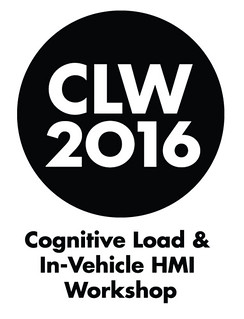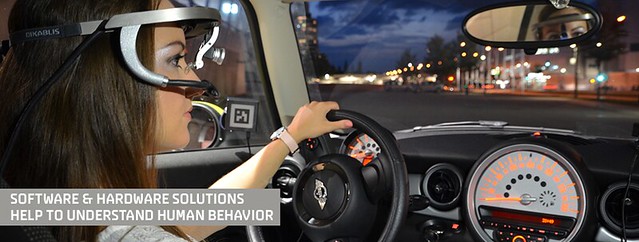CLW 2016 will host Ergoneers, a company that makes eye tracking hardware and software. Ergoneers will participate in the hands-on portion of the workshop and they will provide a demonstration of mobile eye tracker technology for use in driving simulator studies.
Tag Archives: presenters
CLW 2016: Announcing presentations


We are excited to announce the four presentations scheduled for CLW 2016.
Joanne Harbluk: Cognitive Load: Assessment with Visual Behavior
Description: Presentation will introduce and discuss the problem of cognitive load during driving. Examples will be presented as well as some approaches to its assessment.
Bio: Dr. Joanne Harbluk is a Human Factors Specialist with the Human Factors and Crash Avoidance Division of Motor Vehicle Safety at Transport Canada where she investigates human-vehicle interaction with the goal of improving safety. Her current work is focused on the human factors of driver interactions with automated vehicles and on the driver-vehicle interface to assess and mitigate distraction. She is an adjunct research professor in the Psychology Department at Carleton University in Ottawa Canada, and is an associate member of that university’s Centre for Applied Cognitive Research.
Yulan Liang: Identifying Driver Distraction using Eye Movement and Glance Data
Description: This presentation describes a series of studies on developing algorithms to identify driver cognitive distraction and visual distraction using driver eye movement and glance data.
Bio: Dr. Liang is a Research Scientist in the Center of Behavioral Sciences at Liberty Mutual Research Institute for Safety since 2009. She obtained a Ph.D. degree of Human Factor in the Department of Mechanical and Industrial Engineering at the University of Iowa. She focuses her work in the areas of driver safety, performance impairment and assessment, behavior modeling, and data mining. Currently, she is investigating real-time assessment of driver performance and safety risk under various impairments and modeling driver behavior based on naturalistic driving data.
Chun-Cheng Chang: Using Tactile Detection Response Task and Eye Glance to Assess In-Vehicle Point-of-Interest Navigation Task
Description: Point-of-Interest (POI) navigation interactions allow drivers to make simple queries like “Find nearest Korean restaurant”, and the in-vehicle information system will provide a list of restaurants that the driver can navigate to. A driving simulator study was conducted to evaluate the cognitive workload with POI navigation task, using Tactile Detection Response Task (TDRT) and eye glance metrics. Using multiple performance metrics such as response time to a vibrating stimuli (TDRT), eyes-off-road glances, and secondary task performance together can provide insight on driver’s thought process and decision making for a POI navigation task.
Bio: Chun-Cheng Chang is a PhD Candidate under Linda Ng Boyle at the University of Washington. Chun-Cheng does extensive research in evaluating the cognitive workload of in-vehicle interfaces and is expected to complete his PhD in this Fall.
Andrew Kun: In-vehicle user interfaces: deployment, and driving simulator studies at UNH
Description: For over a decade researchers at the University of New Hampshire have been involved in the exploration and deployment of in-vehicle user interfaces. This talk will provide a short review of our efforts on deploying in-vehicle user interfaces for police through our Project54 effort. Next, the talk will discuss a number of recent driving simulator-based studies in which eye tracking data was used to estimate the visual attention of the driver to the external world, the ability of the driver to control the vehicle, and the level of the driver’s cognitive load.
Bio: Andrew Kun is associate professor of Electrical and Computer Engineering at the University of New Hampshire, and Faculty Fellow, at the Volpe Center. Andrew’s research is focused on driving simulator-based exploration of in-car user interfaces, and estimation methods of the drivers’ cognitive load to determine the effect of the user interface on the driving performance. In this area he is interested in speech interaction, as well as the use of visual behavior and pupil diameter measures to assess and improve the design of user interfaces.
CLW 2015: announcing expert presenters
We are excited to announce the expert presenters for CLW 2015: Leon Kenemans and Bruce Mehler. Leon and Bruce will share knowledge with the community regarding the theoretical underpinnings, collection, and filtering of physiological data, focusing on heart rate, electrodermal activity (skin conductance, galvanic skin response, GSR, etc.) measures, and electroencephalography (EEG), as a measure of cognitive load within the scope of automotive research.
Leon Kenemans is professor of Biopsychology and Psychopharmacology at Utrecht University. His recent research activities include neurobiological mechanisms of inhibition and impulse control; dopaminergic, noradrenergic, and cholinergic mechanisms in selective attention and impulse control; the effects of cannabinoids on selective attention and working memory, and their application in anxiety disorders; and a neurobiological approach to susceptibility and distractibility during driving and driving-related tasks, including the effects of multi-tasking and state variables like alcohol. He wrote books on psychopharmacology and on cognitive neuroscience, topics on which he also teaches, in addition to biological foundations of behavior and methods of electroencephalography and other human-biological signals. From 2009-2014 he served as scientific director of the Dutch National Initiative on Brain and Cognition, aimed at excellent research and especially application of Dutch brain and cognition research. He collaborates with (representatives of) several companies including pharma, consumer-lifestyle technology, and ICT solutions for recording brain function and behavioral assessment. He was co-organizer of the most recent Society for Applied Neuroscience conference.
 Bruce Mehler is a Research Scientist in the Massachusetts Institute of Technology AgeLab and the New England University Transportation Center. He is also a senior consultant at NeuroDyne Medical Corporation where he served as Director of Applications & Development prior to assuming his current position at MIT. He has an extensive background in the development and application of non-invasive physiological monitoring technologies in medical, academic and applied research settings. Working with his colleagues in the AgeLab and the New England University Transportation Center, he is particularly interested in exploring methods of combining psychophysiological measures with other assessment techniques to develop a richer understanding of cognitive workload, stress, attention, and emotional arousal in applied settings.
Bruce Mehler is a Research Scientist in the Massachusetts Institute of Technology AgeLab and the New England University Transportation Center. He is also a senior consultant at NeuroDyne Medical Corporation where he served as Director of Applications & Development prior to assuming his current position at MIT. He has an extensive background in the development and application of non-invasive physiological monitoring technologies in medical, academic and applied research settings. Working with his colleagues in the AgeLab and the New England University Transportation Center, he is particularly interested in exploring methods of combining psychophysiological measures with other assessment techniques to develop a richer understanding of cognitive workload, stress, attention, and emotional arousal in applied settings.
